LECTURES
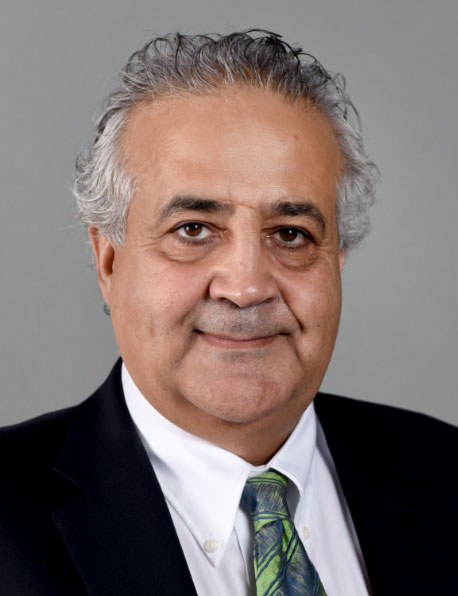

Prof. Barzin Mobasher
Arizona State University, USA
Serviceability Based Design of Shotcrete with Fiber Reinforced Concrete
A paradigm shift is proposed for the design and testing of fiber reinforced shotcrete sections. Using a combination of new fibers formulations, closed-form analysis procedures, a serviceability-based design criteria aimed at long-term durability of shotcrete sections is proposed. The perspective is to meet the ultimate design criteria used traditionally, however emphasis is placed on the serviceability measures such as durability, deflection, stiffness, and performance aspects under the service loads. Three main stages of sustainable product development will be addressed using new cement composites such as welded wire fabric, hybrid FRC, and FRC. The enhanced tensile behavior in the post cracking stage is primarily governed by mechanical anchorage and bond characteristics between matrix and fibers. This added residual strength results in additional cracking, and significant delays in stiffness loss and damage localization allowing for deflection hardening applications. The influence of fiber type, matrix modifications, and processing parameters under tensile and flexural loading are incorporated in constitutive materials properties. Innovative methods of the combinations of rebar and fibers as well development of non-proprietary UHPC materials and measurement of characteristic material properties are presented.
Materials and structural testing are used to validate the structural performance of the round panel, and flexural notched and unnotched beams. Three critical stress states of crack initiation, damage accumulation and localization, and limit state stresses will be addressed with respect to serviceability. The tensile and compressive stress-strain response of FRC, Hybrid FRC, and UHPC mixtures in the context of parameterized material models are used to obtain the closed-form solutions for moment-curvature and load deflection response. Using this approach, both material and structural design are concurrently accomplished. Analytical closed form solutions for serviceability-based design and analysis of composite systems such as beams, and slabs as 1-D and 2D elements are presented next. Results are then used to show the fundamentals of toughening mechanisms in the materials and structural properties that lead to strain localization. The models address the flexural design using parameters such as maximum allowable curvature, crack width, deflection, or any other serviceability-based criteria based on tension softening or hardening response. The beneficial influence of hybrid design on strain localization is also addressed.
In the final section of the talk, we address the durability of steel fiber reinforced shotcrete in the context of corrosion potential and the differences between the corrosion of rebar with the fiber corrosion mechanisms. Challenges of testing and modeling of cracking, and measurement of flexural creep of cracked SFRC sections in service.
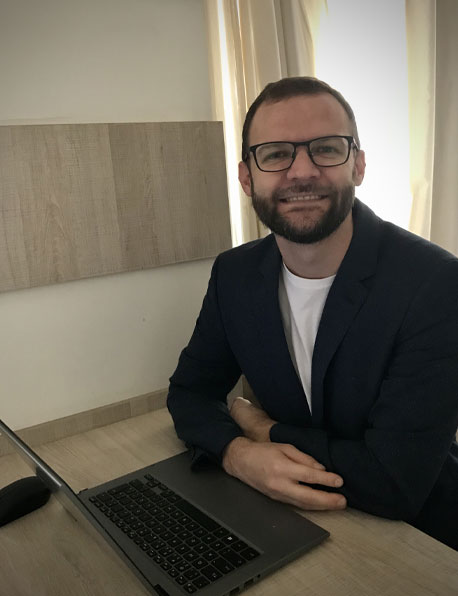

Prof. Renan Pícolo Salvador
University of São Judas Tadeu, Brazil
Cement-accelerator interaction and its influence on the development of mechanical strength of sprayed concrete
Sprayed concrete is widely used as structural support for the stabilization of tunnel walls and underground constructions. The performance of sprayed concrete produced with accelerators is strongly related to its mechanical properties at early and late ages. In practice, this is the main parameter that governs its mix design and applicability. Mechanical strength development results from the combination of several factors associated with the mix composition, application method and microstructure. The compatibility between cement and accelerator is one of the most critical parameters that control the kinetics of hydration and the rate of mechanical strength gain. The spraying process also needs to be considered, since it leads to faster reaction rates and directly affects the porosity of the matrix.This speech focuses on evaluating how accelerated hydration reactions influence the mechanical strength development of the matrix. The main chemical processes that affect the mechanical properties at early and late ages will be elucidated. By doing so, the mechanical performance of sprayed concrete may be inferred based on its chemical composition, to improve its mix design and quality control.
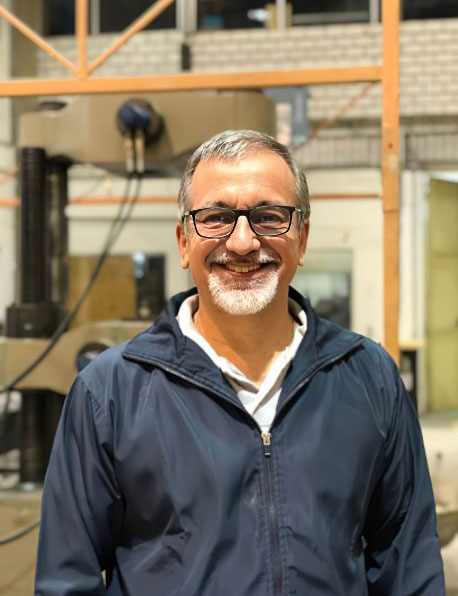

Prof. Antonio Domingues de Figueiredo
University of São Paulo, Brazil
Integrated approach to the control of fiber reinforced shotcrete
Quality control procedures for fiber-reinforced shotcrete (FRS) for tunnel linings is based on two main approaches. The first one is based on energy absorption, normally obtained by performing square or round test panels, which could be considered as the conventional approach. More recently, the determination of constitutive equations that could be associated with the more recent design guidelines where the fiber reinforced concrete is applied as structural material is showing an increasing interest. This second approach is naturally linked to the flexural beam tests sawed from test panels as a regular method for quality control. However, both approaches bring the impossibility of the actual tunnel lining evaluation because the extraction of cores in an adequate shape to perform these tests is unfeasible. Considering this condition, an integrated analysis was carried out based on an experimental study and applying numerical models to demonstrate that it is possible to integrate both approaches. In addition, the use of small specimens that are adequate to be prepared from cores extracted from the structures is also demonstrated. This integrated analysis makes it possible to carry out a more robust assessment of the quality of FRS as a structural material, in addition to allowing the verification of the actual condition of the tunnel lining, increasing the confidence level of this technology.
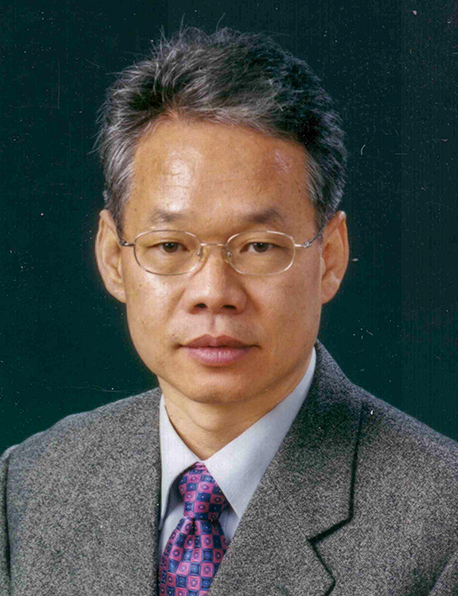

Prof. Kyong-Ku YUN
Kangwon National University, S. Korea
Applications of cellular sprayed concrete with natural fiber
Silica fume has a filling effect in a hardened cement paste together with a Pozzolan reaction. It improves water tightness and durability by filling effect and Pozzolan reaction. It, also, increase the pumpability and build-up thickness in shotcrete applications. In order to distribute the very fine silica fume into concrete evenly, cement manufacturers make a pre-blended cement of silica fume and provide to a market, resulted in high cost of pre-blended cement of silica fume. Cellular sprayed concrete is a very simple and economic way of remixing Ordinary Portland Concrete (OPC) into high performance shotcrete (HPS) or high performance concrete (HPC) at a job site. It is produced by incorporating cellular and silica fume in the process of remixing and dispersing the mineral admixture in an ordinary ready-mixed concrete at a job site. This method could be applied at a new construction, an underground work, an architectural job, and so on.
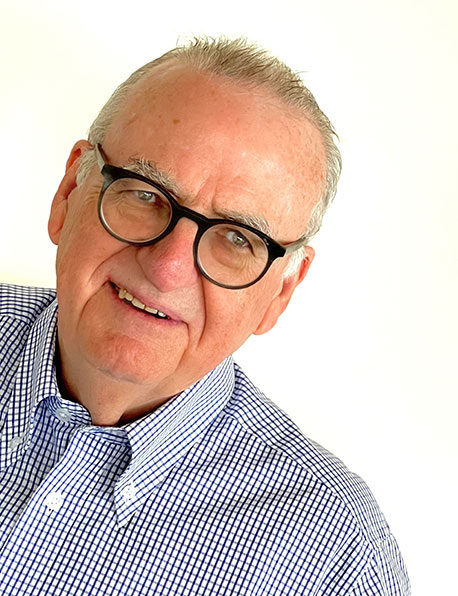

Tom Melbye
Member of the Board of Directors – Normet Group, Finland
Sustainable solution for sprayed concrete in underground projects – A Holistic approach
One of the key developments over the last 30 years in both the tunneling and mining industries has been with the application of sprayed concrete for ground support. Sprayed concrete, a globally recognized support system in underground and mining projects, is required to perform its support function not only over the expected life of underground openings but also, from a safety and productivity perspective, at a very early age. The balance between placement ability, early strength and long-term performance is a delicate one, and has been repeatedly improved upon as the use of sprayed concrete has increased in mining and tunneling. Early strength is particularly important in safeguarding the integrity of underground openings on the one hand, as well as in protecting the operators and equipment on the other, thus allowing work resumption as quickly as possible while strictly following all safety regulations. The main developments have been in much improved overall safety, up to a 6-fold increase in spraying outputs and vastly improved quality, which nowadays matches that of standard concrete. These improvements have been mostly brought about by the introduction of wet-mix sprayed concrete from the mid 1980’s onwards, with robotic spraying machines operated by highly professional nozzlemen. This new modern high performance sprayed concrete approach, coupled with new fiber technologies and smarter, holistic design approaches, affords the mining industry some significant steps forward in faster, more environmentally friendly, and lower cost and risk of rock support process. As with the entire construction industry, mining projects increasingly have a responsibility to decarbonize .Whilst sprayed concrete is particularly carbon rich, there are now significant positive opportunities to reduce carbon on such projects. The paper promotes a modern holistic approach to sprayed concrete in mining, highlighting significant carbon reducing rock support design solutions, with an emphasis on reduced carbon concrete suitable for spraying using low carbon cement ,additive and a new generation of green admixtures and accelerator tailored for such application. Then, through adoption of zero emission electric drive underground equipment coupled with new digitalization tools and competency training, the paper emphasizes further decarbonization can be achieved through construction efficiencies and big saving in CO2 and applied cost.
This paper covers the actual state-of-the-art, and including future insights with respect to best practices and technologies which form the basis for the safest, earliest re-entry policies and with a holistic approach to mix design, equipment and application techniques. One of the future trends and opportunities will be the removal of the operators away from the exaction face through the use of automatic remotely operated spraying robots equipped with a 3D scanning system; this also allows to obtain real time information on all parameters of the spraying application (IOT solution). Simulator supported user training of High-Performance sprayed concrete is crucial in ensuring the correct level of operator qualification in the future.. Finally the paper give some examples where this new low carbon solution being adopted.


Pierre Rossi
Civil Engineering Consultant, France
Design of structural Fiber Reinforced Shotcrete: French practice Today and Tomorrow
This paper presents, briefly, the current practice of the French professionals of shotcrete concerning the design of structural fibre reinforced shotcretes (FRS). It is mainly based on the use of the Model Code 2010 for the design method itself and the use of the 3 points bending test on notched beam or notched plate for the mechanical characterization of the FRSs. After a critical analysis of this current practice, a numerical model is presented as a better solution, in the future, to optimize the design of this type of industrial application in the perspective of eco-constructions.


Alun Thomas
All2plan Consulting, Denmark
Improving the sustainability of Sprayed Concrete Lined tunnels
Drawing on recent experience in worldwide, this presentation will examine how we can reduce our environmental impact, taking the example of underground construction. Specifically, it is well known that the concrete and steel reinforcement in tunnel linings are two of the largest contributors to the embodied carbon dioxide of tunnels and underground spaces. Improvements can be made by either replacing materials or changing the design. However, substituting materials and components for ‘greener’ ones often offers only limited gains. Adopting new designs offers the greatest advances but, like all innovations, these face opposition due to their lack of performance data, codes and standards. Fibre reinforcement is a good example of a low carbon technology which opens the door to more economic and efficient designs as well as having a lower embodied carbon in the reinforcement itself. “Business as usual” is not good enough for us to meet the challenge of climate change. To improve the sustainability of underground construction, clients need to adopt a more open approach to innovative methods and products that have lower environmental impacts.


Stuart Manning
Technical Director, Shotcrete Services Ltd – Wealden Concrete Ltd, UK
Low carbon shotcrete
The carbon impact of concrete is principally dependant on cement (binder) type. It is common to significantly reduce the embodied carbon of cast concretes by using supplementary cementitious materials (SCMs) such as slag or ash, with high proportions of the cement content typically being provided by such materials. Reducing the carbon impact of sprayed concrete is significantly more problematic given the typical requirement for relatively high early age strength development, particularly in tunnelling works.
Coupled with the need to reduce the rebound associated with this placement method, the early age strength requirement is frequently achieved by using high proportions of both cement and accelerating admixtures. Contemporary accelerating admixtures are liquids formulated to work with CEM I (Portland Cement): As a result, typical sprayed concretes contain little if any SCMs and relatively high proportions of admixtures, further contributing to their high carbon content relative to cast concretes.
Over several years sprayed concrete contractor Shotcrete Services Limited (SSL) and material supplier Ecocem have been investing in trials with an alternative powdered accelerating admixture, for which they own the distribution rights from Japanese producer Denka. The material is principally composed of amorphous calcium aluminate and calcium sulfate, with the potential to achieve the typical early age strength requirements of sprayed concrete tunnel linings (SCL) in high slag content mixes.
In late 2019 Stuart Manning of SSL and John Reddy of Ecocem were invited to present their work to an Arup Team led by Chris Peaston and including Michael Sataya. The Arup review led to the formation of a group of interested parties including Prof Chris Goodier at Loughborough University. In mid-2020 the group successfully applied for a Loughborough University led Institution of Structural Engineers (IStructE) grant to further the research. When Dr Peaston left Arup and incorporated Peaston Concrete Consultancy in July 2020, the new company was added to the group.
In 2021 the Consortium was awarded Innovation funding by HS2 to complete a full scale trial of the innovation and look in details at the performance of the material. A sprayed concrete trial was undertaken at the premises of SSL in December 2021 using prototype equipment. The sprayed concrete was formulated with 480 kg/m3 of cement, comprising 70% slag and a 7% by total cement weight addition of the Ecoshot powdered accelerator. The trial testing requirements were based on the HS2 SCS S1/S2 contract SCL specification, including those for early age strength development based on the industry standard J curves for strengths of up to 24 hours, and for subsequent strength requirements up to 90 days. The sprayed concrete also included 35 kg/m3 of fibres designed to meet the specified requirements for residual flexural strength.
The trials and resulting data collected and examined by the consortium proved that the ‘Ecoshot’ Low Carbon Sprayed Concrete met the required criterium for use on the Project and also brought significant other performance benefits which required further investigation and testing. This success has led to the subsequent refinement and ongoing development of the spraying and powder dosing equipment which is hoped to be completed in 2023.


Juan Alvarado
Technical Manager – Bekaert South America
Evaluation of mesh and fiber reinforced sprayed concrete behavior and its impact on support system optimization and sustainability


Michael Mett
Head of Research & Quality Management – Dibit Messtechnik GmbH, Austria
State-of-the-art 3D Tunnel Inspection with Photogrammetric and Hybrid Scanning Systems
The faster such measurements can be made on-site, the less it impacts shut down times to the regular traffic. Surveying costs and risks of accidents can be reduced and tunnel safety is increased due to faster and more comprehensive test cycles.
Dibit Messtechnik GmbH has developed photogrammetric and hybrid 3D-tunnelscanners for road and train tunnels which are unique worldwide. The “High-Speed” 3D-measuring system can record the tunnel in high quality in terms of geometric and image resolution at a speed of up to 100 km/h. While the manually/driven, lightweight “Altira” system can effectively be applied to tunnels which are difficult to access, in small structures, and in situations in which a fast un-railing is needed, such as due to approaching trains. The Altira system also comprises a thermal camera unit in order to detect temperature anomalies on the tunnel surface with a thermal sensitivity of 40 mK (NETD – Noise Equivalent Temperature Difference).
In-house developed software tools provide possibilities to process and analyze 3D-models from the High-Speed and the Altira systems, to prepare high resolution textural surfaces in true-colors and false colors (e.g. thermal/infrared). The photorealistic texturing of the 3D model with a resolution of 1 x 1 mm enables the identification and analysis of even the smallest material damage (e.g. cracks >= 0.3 mm wide). Geometric properties can be evaluated in the millimeter range as well as geometric deformations and volume changes can be observed between data of different time epochs.
Any damaged areas can be marked in a 3D-model so that the development over time can also be included in a subsequent analysis. Universal data exchange formats enable further processing in CAD- and BIM-software. In the future, automation and predictive maintenance should save time and money and improve overall tunnel reliability.


Silvia Vieira
R&D General Manager – Votorantim Cimentos, Brazil
Green cements as a tool to lower the ecological footprint of sprayed concrete
The main contributor to the environmental footprint of concrete is the binder used.
This presentation will be focused on enhancing sustainability of shotcrete by using greener cements.
It will discuss the direct and indirect impacts the use of cements with low embodied CO2 will have on concrete properties and the environmental footprint of the construction.
The direct impact is related to the concrete mix design and the indirect one is related to concrete durability and, consequently, its service life.


Roberto Dakuzaku
Technical Director – S. Takashima, Brazil
Experiences in sprayed concrete technological control in road and subway tunnels: a parallel with the current demands for technological control in mining tunnels
This article aims to present the practice carried out in the sprayed concrete technological control in subway and road tunnels in the last 20 years, among them, Line 4 Yellow, Line 5 Lilac and Line 6 Orange of the São Paulo Metro, Line 4 South of the Rio de Janeiro Metro and more recently, the tunnels for the duplication of the Tamoios and Contorno de São Sebastião highway, lined with shotcrete reinforced with polymer macrofibers.
In this last project, the fiber-reinforced concrete (FRC) performance is being controlled by residual flexural strength tests according to EN 14488-3 and double punching according to ABNT NBR 16939.
In parallel, present test plans and procedures to develop dosage studies of FRC, a soon as, the additives development for obtain concretes with long maintenance workability in mixes with 100% of recycled aggregates from excavation material, easily applicable in mines tunnels, where current shotcrete technology has been more conservative for these requirements.


Marcello Congro
Pontifical Catholic University of Rio de Janeiro and Tecgraf Institute/PUC-Rio, Brazil
Design of fiber-reinforced shotcrete for tunnel linings using ANN and numerical models
Recently, hybrid workflows combining artificial intelligence and finite element models have been proposed to design tunnel linings using fiber-reinforced shotcrete. In this work, an artificial neural network model is developed to predict the composite toughness from ASTM C1550 and EN 14488-5 panels. Secondly, the numerical simulation of a tunnel lining with steel fiber reinforcement using an elastoplastic finite element model is carried out. The model is calibrated using parameters from a real case of a circular tunnel taken from the literature and compared with analytical solutions. The framework combining ANNs and numerical models emerges as an interesting alternative for the design of tunnel linings in a more straightforward, faster, and economical way.
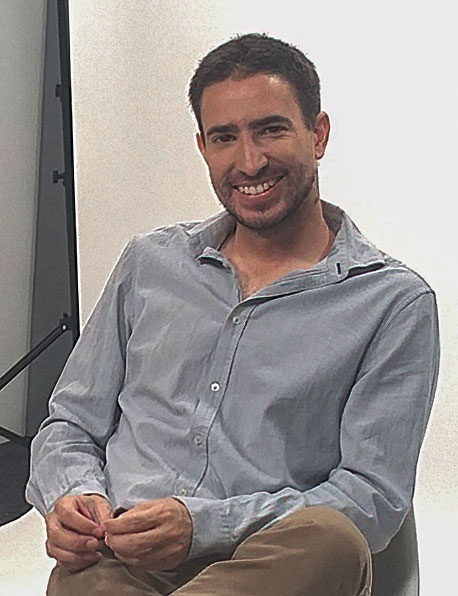

Prof. Luis Segura
Universidad de la República, Uruguay
Montevideo Test – A robust and simple test for Sprayed FRC characterization
The three-point notched beam test (EN 14651) has increasingly been used for the characterization and control of FRC, even for sprayed concrete. However, there are technological restrictions to consider, such as sample size.
In this presentation, an alternative for the characterization and control of the HRF, called the Montevideo Test (MVD), is shown. It was developed with the aim of being a simple and practical method which can be adequately correlated with the three-point beam test. MVD test has already been used in sprayed fibre reinforced concrete.
Two important advantages of MDT test are: a) The Force-Displacement curve obtained with the MVD test can be converted to the Force-CMOD curve obtained by the EN 14651 test with two constant linear transformations; and b) MVD test can be carried out on circular cores extracted from panels or tunnels, simplifying quality control.


Prof. Tarcísio B. Celestino
University of São Paulo, Brazil
Characteristics of sprayed concrete for optimum underground support
The evolution of sprayed concrete deformability since early age to 28 days make it suitable for support systems of underground works, both for tunneling and mining. In addition, the capability of geometrical adaptation to the – sometimes irregular – shape of the excavation surface allows it to act as a fully continuous support system. This is a very important characteristic, not completely fulfilled by other support systems. The balance between the increase in load as the excavation advances and the increase in strength and stiffness of the sprayed concrete shell has led to optimizations of requirements on material properties. Reinforcement with fibers is an example. This will be highlighted based on backanalyses of real excavations. Other improvement requirements on permeability have led to the use sprayable membranes. Membranes between layers of sprayed concrete introduce changes also in the mechanical behavior of composite shell linings which need to be evaluated. Usually, those membranes increase the ductility of the composite lining. The effectiveness of different systems depends on the characteristics of the ground mass in terms of strength of discontinuities, degree of fracturing and acting stresses. The optimum combination of rock mass characteristics for maximum efficiency of sprayed concrete will be shown based on a neural network analysis of the performance of several underground excavations. Examples of advantages of the use of sprayed concrete as final lining of different underground works will be shown.


Cassio Luiz Abeid Moura
Director – Concreto Projetado do Brasil, Brazil
Practical aspects for the application of fiber reinforced shotcrete
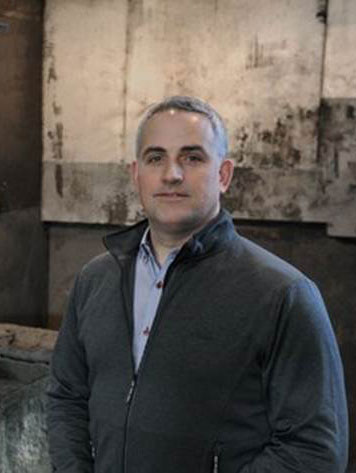

Prof. Marc Jolin
Université Laval, Canada
Doing More and Doing Better with Fibre-Reinforced Shotcrete
Over the years, fibre-reinforced shotcrete (FRS) has proven to be a very effective and versatile material. It plays an essential and often unique role in ground support systems in mines and many tunneling projects, and it makes possible the safe and economical construction of various civil structures. Simply put, FRS performs well in situations where installing conventional reinforcing bars or cast fibre-reinforced concrete (FRC) would be complex and tedious or simply unsafe. However, we believe that FRS does not get the consideration and attention it deserves.
This presentation will discuss how FRS can achieve more recognition and how we can do better in exploiting its impressive properties and capturing its full potential. This is achieved by focusing on the different test methods available and by highlighting the best elements of each method and how they truly inform us on the behaviour of FRS. A comparative study conducted in the laboratory of actual shotcrete samples as well as numerous QA/QC testing conducted for large constructions are part of the analyses.


Bruna Souza
Geotechnical Geologist – AngloGold Ashanti, Brazil
Application of Fiber Reinforced Shotcrete at Initial Squeezing Environments
Surface support is an important resource of ground support systems, capable of minimize the risk of rockfalls, improve the rate of production and, in the case of shotcrete, distribute the load between rockbolts.
The benefits of shotcrete application had been noted at Cuiabá Mine since its beginning, providing a more safety environment for the employees and reducing scalling needs, for example. Although, with mine deepening, shotcrete behavior became a challenge for the operation, due its stiffness facing a very deformable rock mass with initial squeezing conditions.
This work is focused on the experiences with shotcrete at Balancão orebody decline, which has recently achieved 1000 meters deep and has been facing challenges with the integrity of the surface support.


Charles Hanskat
Executive and Technical Director, American Shotcrete Association, USA
ASA introduction to underground shotcrete
Shotcrete has been widely used for underground tunnels, mining and subways for decades. With advances in design, placement and finishing, shotcrete is being used for not just initial linings and temporary support, but for final linings. This presentation is based on ACI 506.5R, “Guide for Specifying Underground Shotcrete.” Key areas covered include:
- Highlights typical underground applications.
- Covers materials, anchorage, reinforcement, and performance requirements.
- Addresses batching/mixing, transport, placing equipment, preparation, curing, and protection.
- Discusses QA/QC, submittals, preconstruction tests, and construction acceptance.
- Includes repair and rehabilitation, safety, measurement, and payment.


Welton Gomes
Geotechnical Engineer – AngloGold Ashanti, Brazil
Use of Mining Tailings to Produce Fiber Reinforced Shotcrete


Zander Pontes Ferreira
ZPF Consulting, Brazil
Reduction in the re-entry time at NEXA RESOURCES' Vazante Zinc Mine Brazil through fiber reinforced shotcrete improvments
NEXA RESOURCES Vazante Underground Zinc Mine, being conservative, had been using 6 hours as the re-entry time for its development galleries until a few time ago when a shotcrete improvment programme was implanted. That programme aimed to improve the shotcrete system in general with special focus on increasing early strengths in order to reduce significantly the re-entry time. The programme involved a complete materials characterization of two sets of each material (aggregates, cements, admixtures and fibres) and the development of new mix designs. The Austrian Standards, or EN 14.487-1, for early strengths, were used as references and the J2 class was reached as the main programme result (1 MPa / 90min).
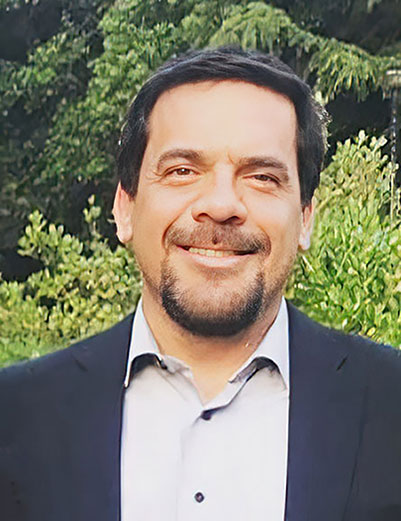

Ignacio Contreras
Sika – Business Development Manager Fibers LATAM, Chile
Shotcrete in mining, the contribution of additive and fiber technology for underground development
Shotcrete solutions present various specification realities and design challenges that over time have required the additives industry to develop technologies to meet requirements and optimize project times and costs. This presentation will focus on a general look at the region taking some particular cases of projects and their solutions. The objective is to advance in the review of standards, regulations and good practices for the improvement of underground construction in Latin America.


Enrique Vega-Leon
Tauri Engenharia, Brazil
Geospatial Technologies Applied on Underground Excavations and Structures
Heavy Underground Assets involved in complex operations are increasingly requiring remote control and comprehensive data for both registering as built information plus monitoring its structures throughout its lifecycle, turning feasible to deal with geotechnical uncertainties and business challenges not possible to solved before through periodically realistic modelling of the physical space. In such manner, Optical and Geophysical high-end Technologies transform sizable captured geospatial dimensions into combined and functional facts, statistics and models essential for supporting timely decision-making and, furthermore, encompassing strategic apraissal, operating robust hardware and software resources.
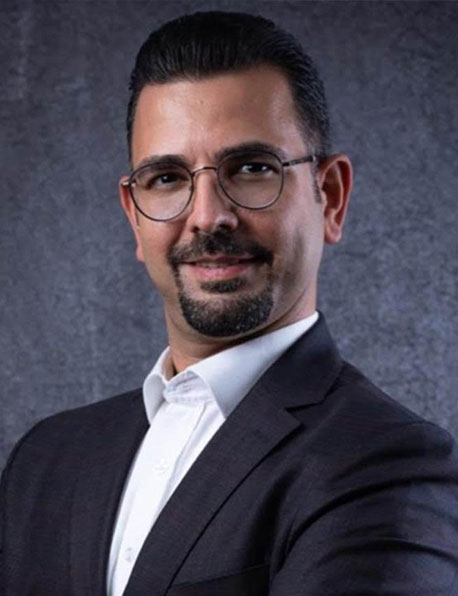

Lühan Arda Bayraktaroğlu
Kordsa, Turkey
Use of Synthetic Fibre Reinforced Shotcrete as Support System
Synthetic fibres have been utilized in shotcrete since the 1990s and can be used to entirely substitute conventional reinforcement in continuously supported systems. Micro synthetic fibre reinforcements decrease plastic and drying shrinkage cracks, together with reducing rebound in the shotcrete, while macro synthetic fibres enhance durability by increasing toughness and ductility. Macro-micro synthetic fibre reinforcements are in accordance with the EN 14889-2 industry standard. Fibres with a diameter greater than 0.3mm are classified as macro fibres, while those with a diameter less than or equal to 0.3mm are classified as micro fibres.
The support systems used in tunnel applications have been updated in line with developments in technology. The history of reinforcement systems dates back to tree stumps and has since evolved to incorporate steel support systems. Nowadays, tunnel structures are reinforced with fibre-reinforced concrete, making it practical and durable. To ensure speed and high efficiency in constructing support systems, it is critical to plan the timing carefully.


Carlos de Sá Alves
Geomechanics and Geotechnics Coordinator – Ferbasa, Brazil
Use of microsilica in shotcrete for the Ipueira / FERBASA underground mine
FERBASA mining was one of the pioneers in the use of shotcrete in underground mining in Brazil; over time, partnerships were formed with consultants and suppliers of national and international chemical products. Several challenges to control and classify the aggregates, achieving self-sufficiency in the consumption of a large part of its inputs, highlighting one of great importance as a reinforcing element, which is the production of microsilica (silica fume). Microsilica is an amorphous variety of silica that can be used to increase the strength of concrete. In Ferbasa Ferro Silicon and Silicon Metal production process, microsilica is formed, which is collected in the furnace effluent gas treatment filters. It is an extremely fine material, with a specific surface between 15 m²/kg and 25 m²/kg. In concrete, microsilica occupies the empty spaces, resulting in greater strength and greater density. The use of this silica fume together with a superplasticizer additive results in a high strength shotcrete. This makes it possible to design structural elements of smaller dimensions, generating savings and improving the workability of the concrete. For more than a decade, microsilica has been used in shotcrete that is applied at the Ipueira / Ferbasa Mine. In a practical case, operational use in FERBASA shotcrete, microsilica percentages by mass of 4% to 6% in normal mixes and up to 8% in special cases are generally used. Cement dosages per cubic meter of concrete in the mixes vary from 400 kg/m³ to 425 kg/m³, and microsilica dosages per cubic meter of concrete vary from 17 kg/m³ to 25 kg/m³. With these dosages of microsilica, we obtain a mechanical resistance gain of 4.5 MPa to 7.0 MPa, in samples with 28 days of curing time.

